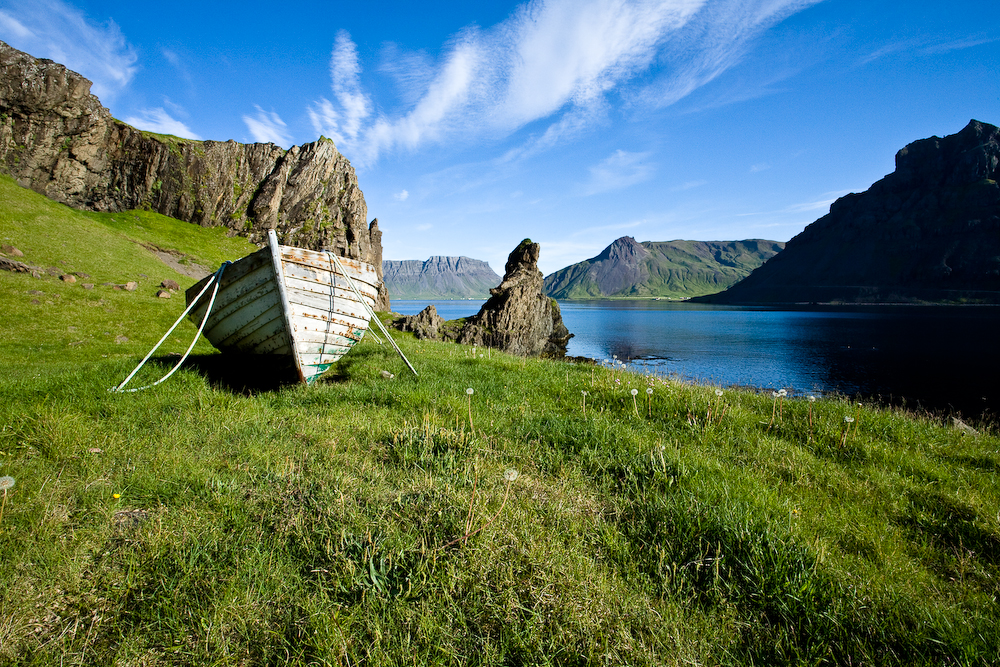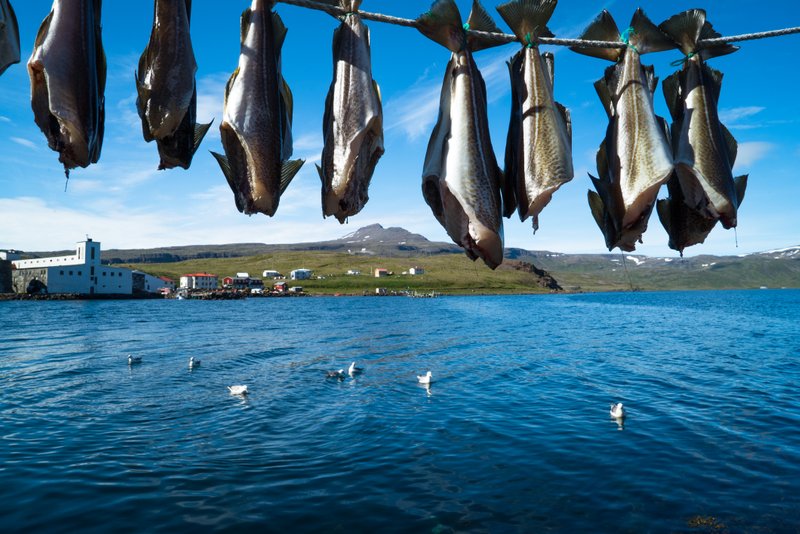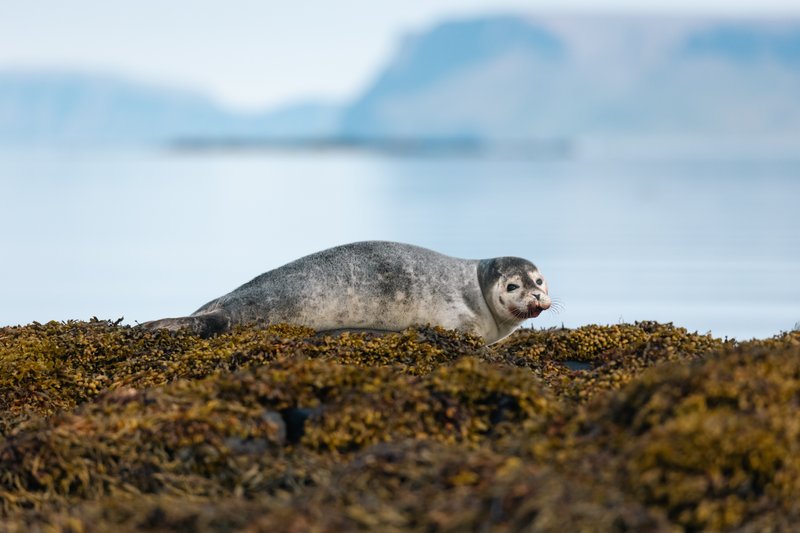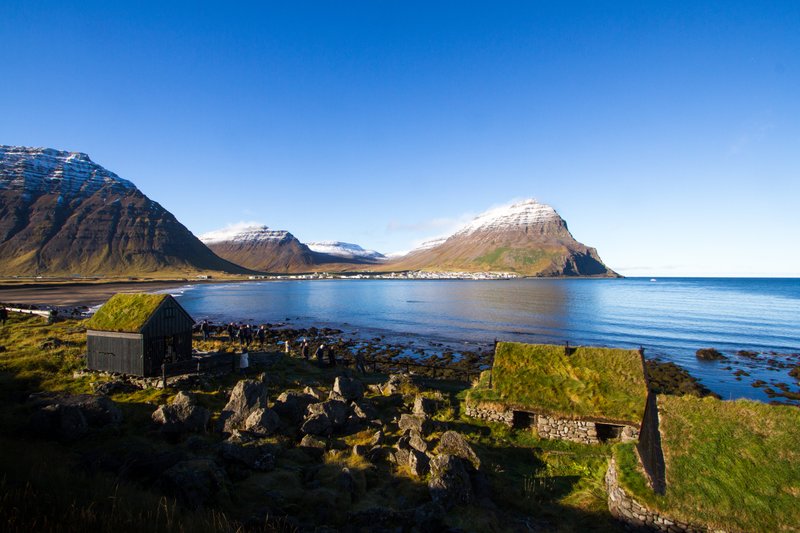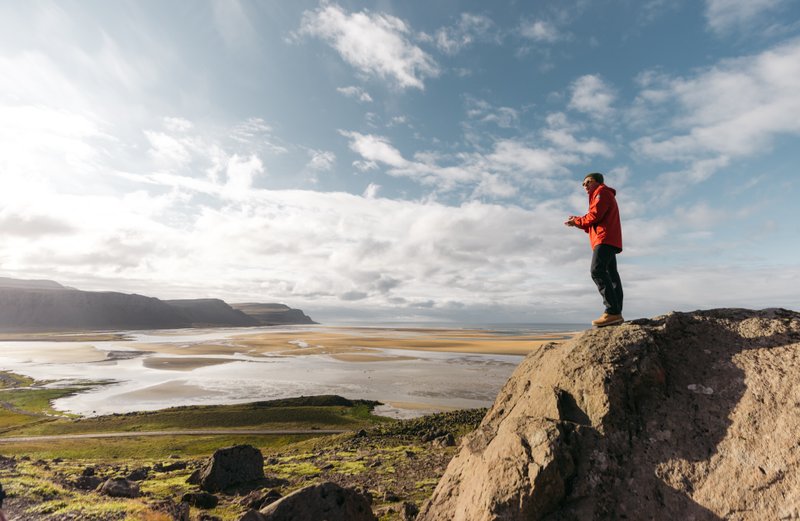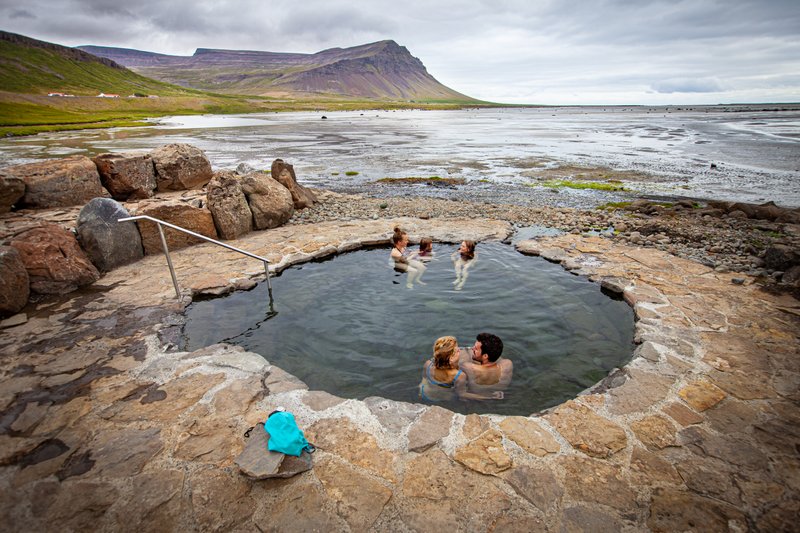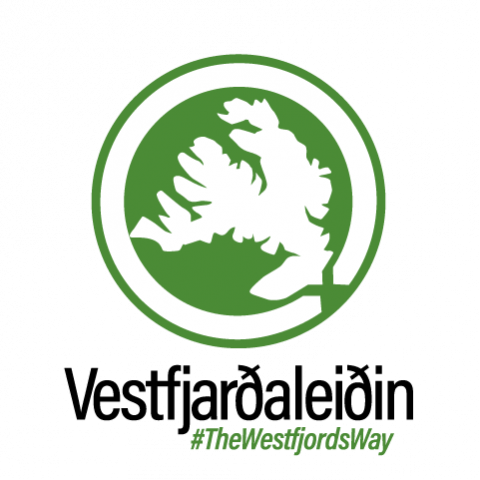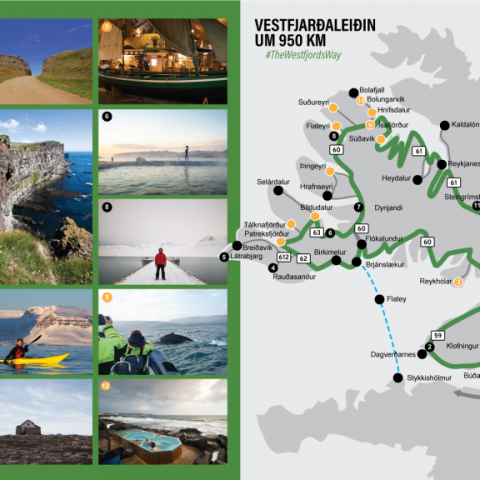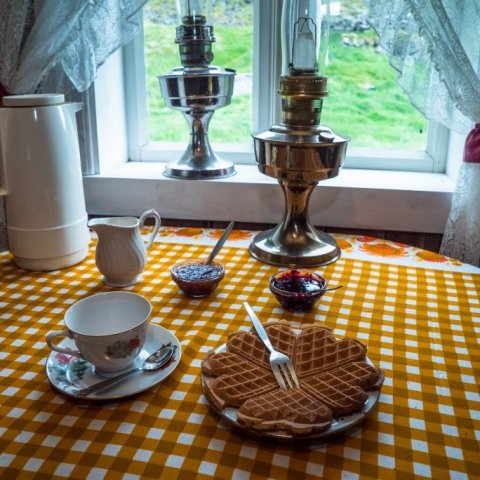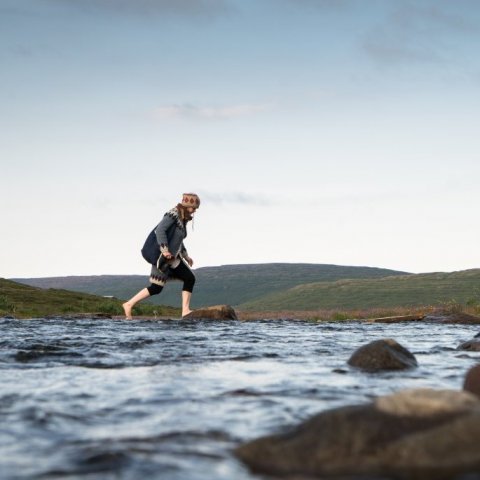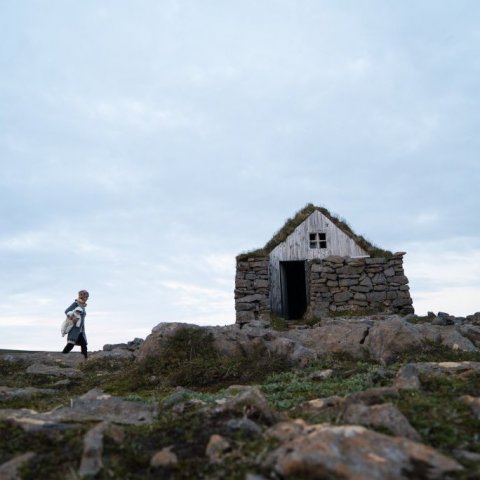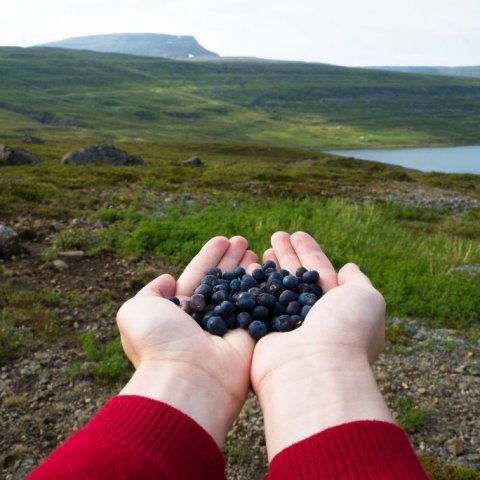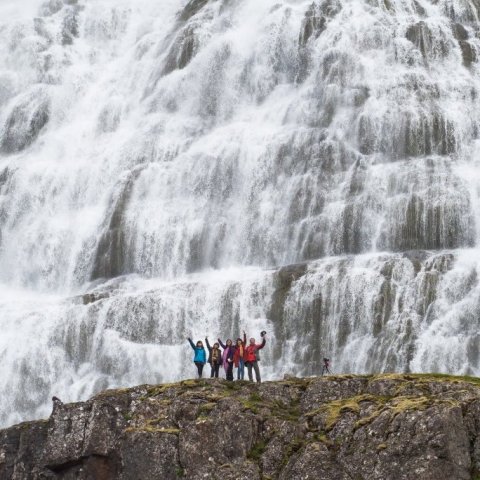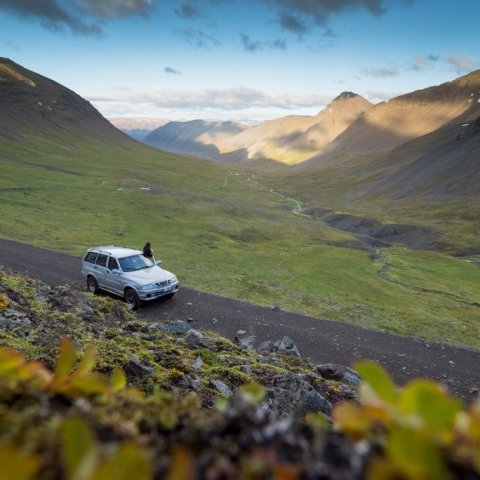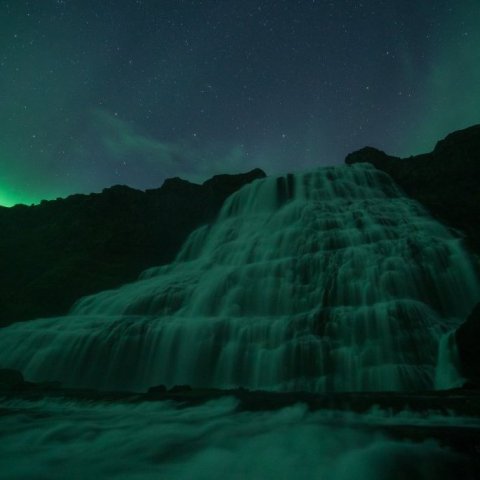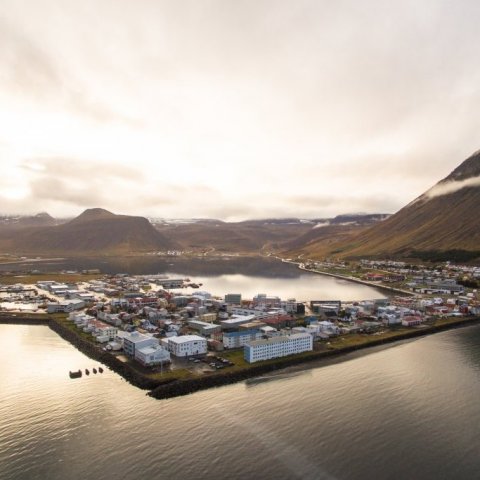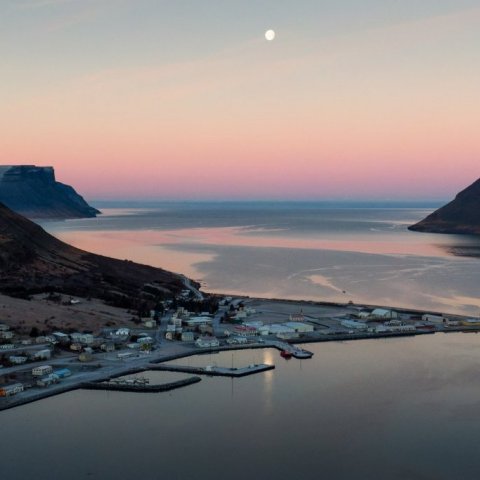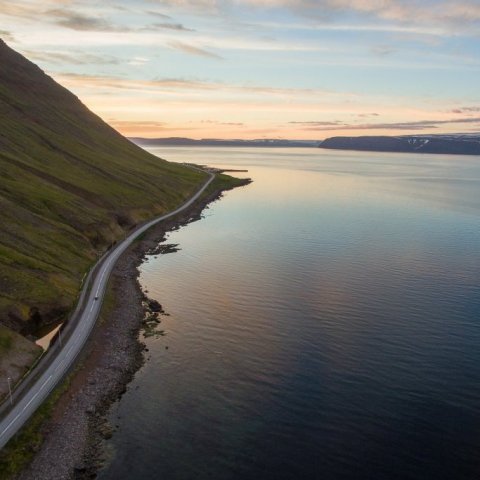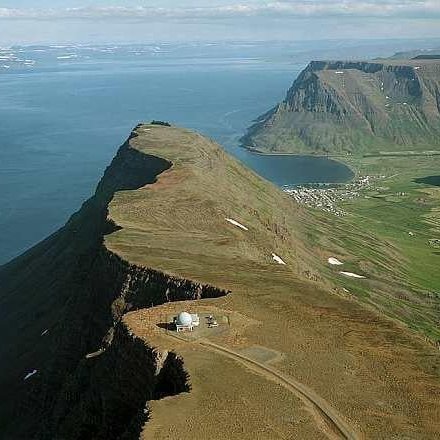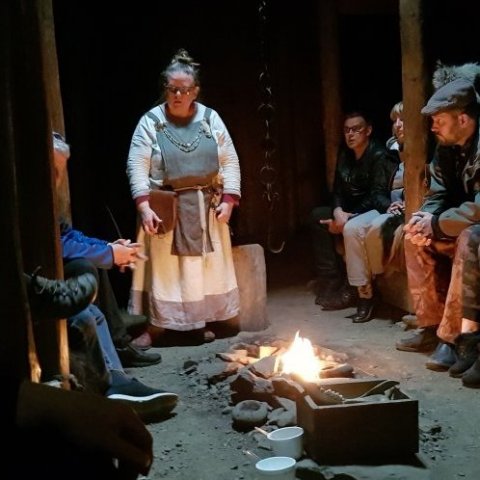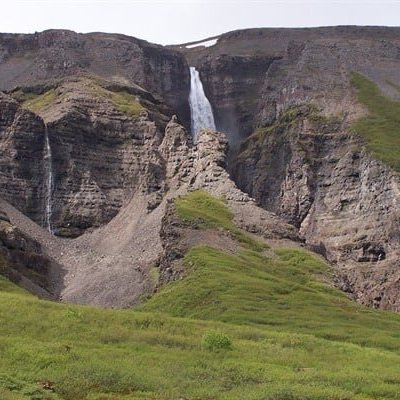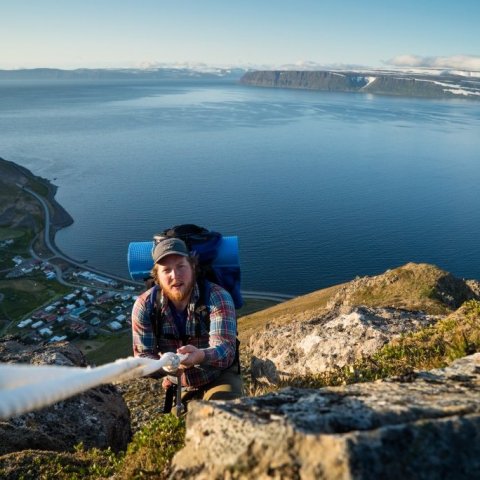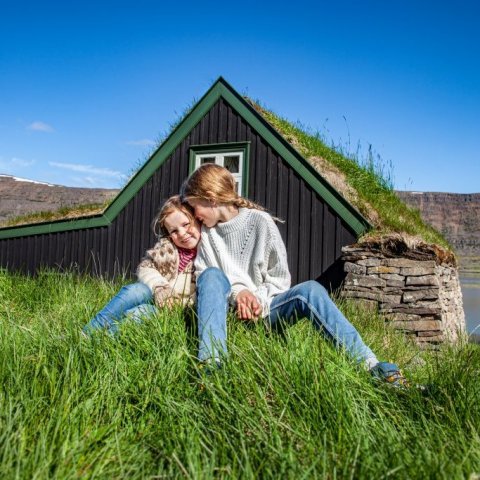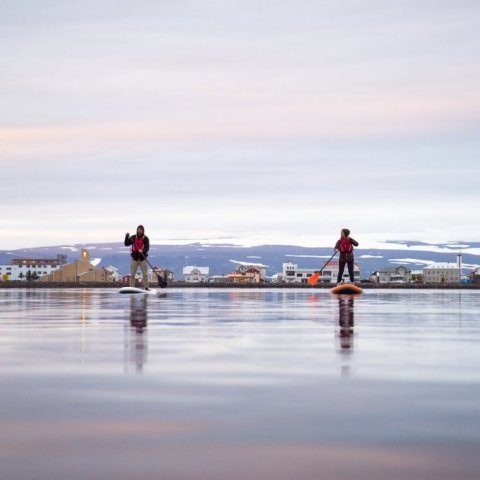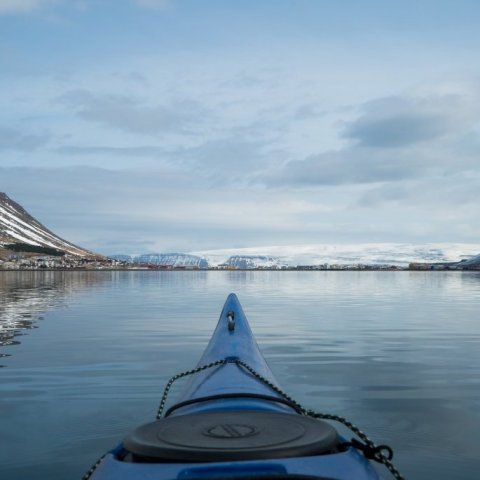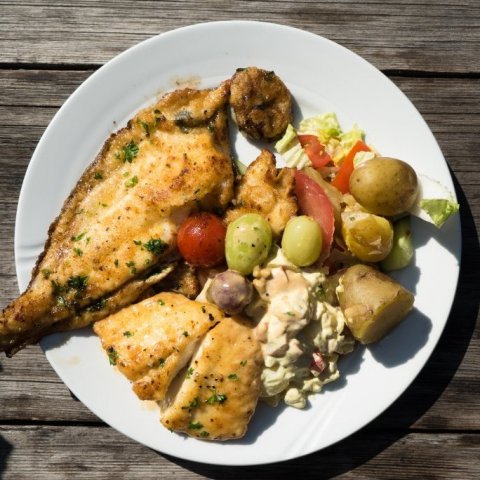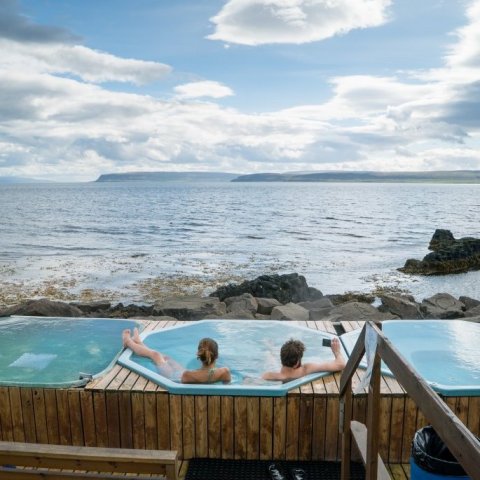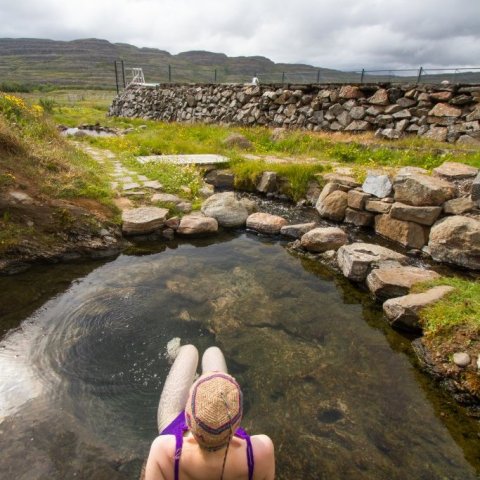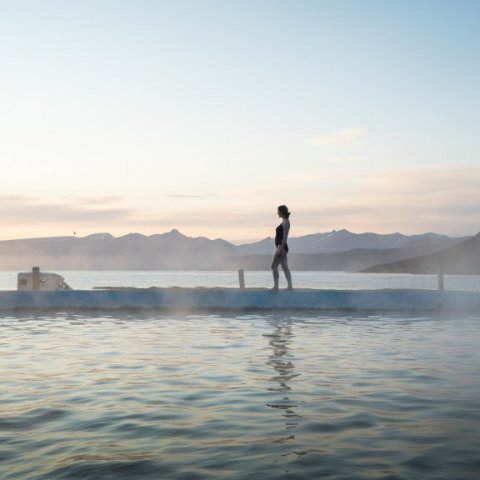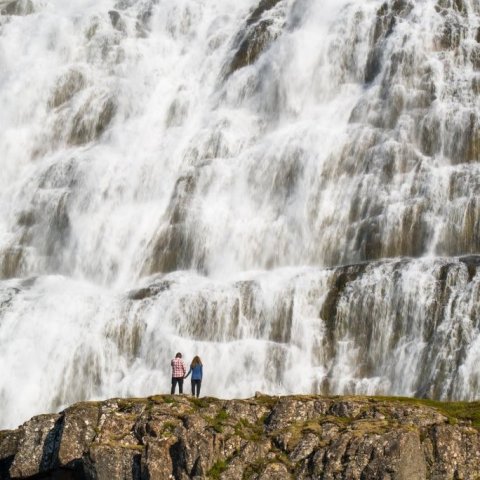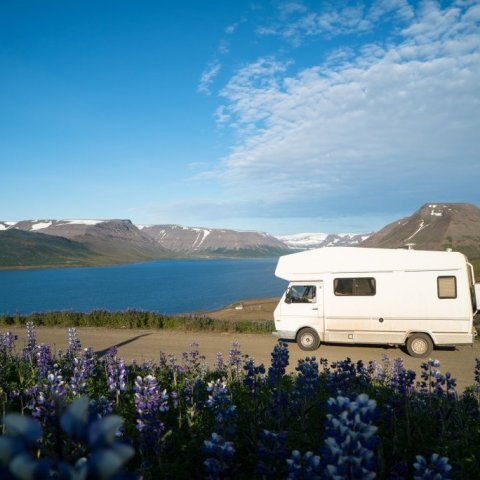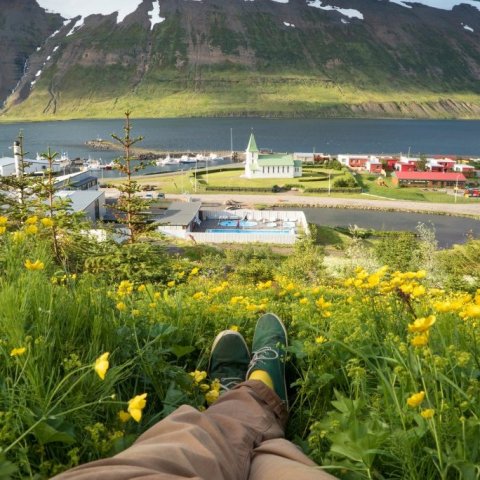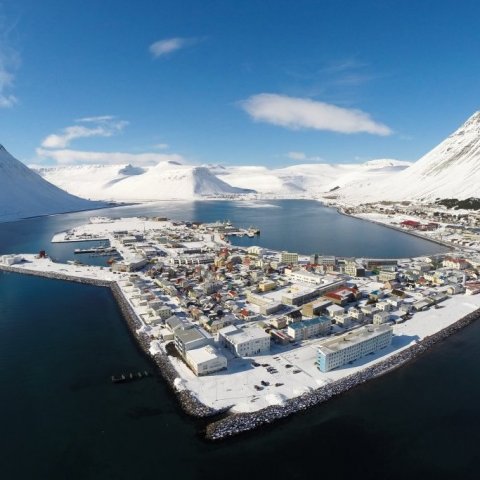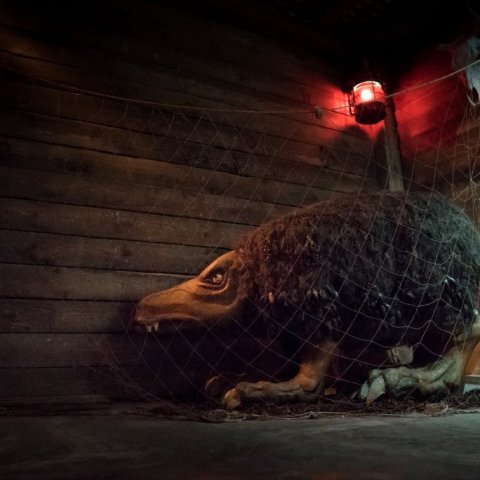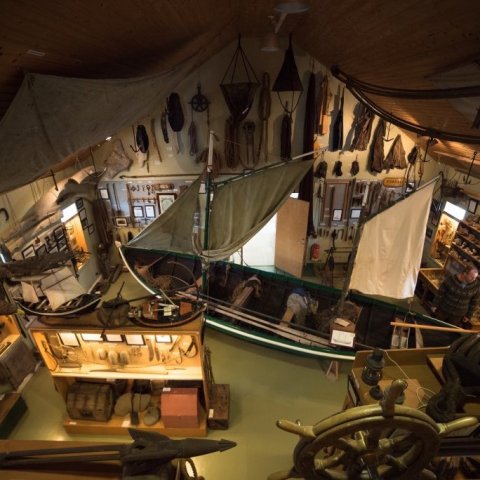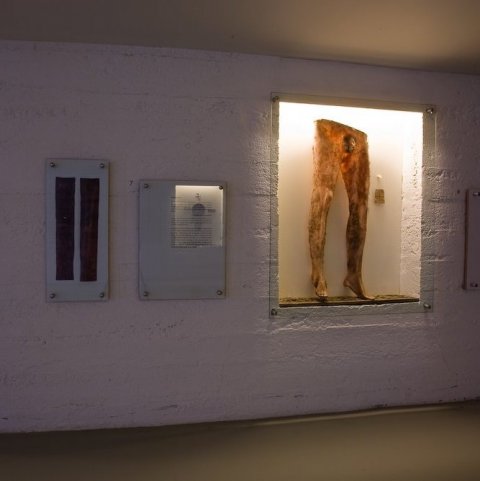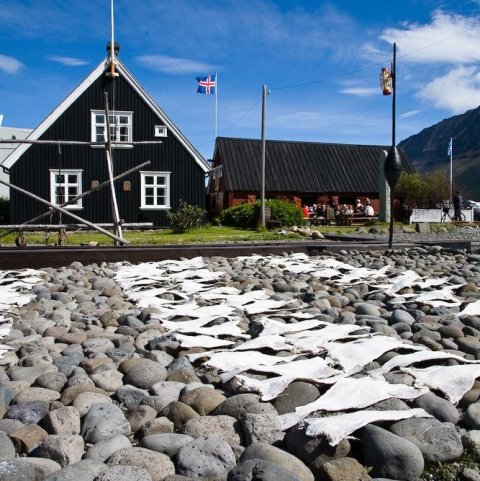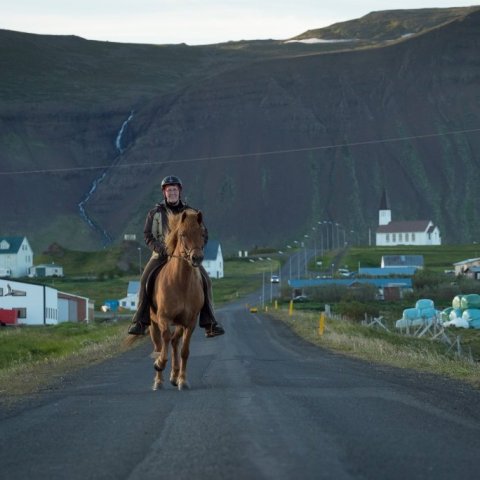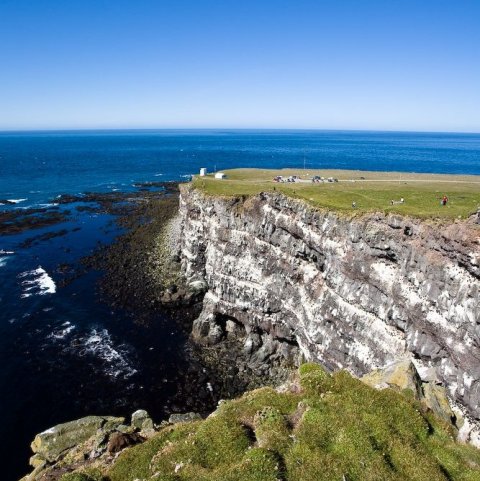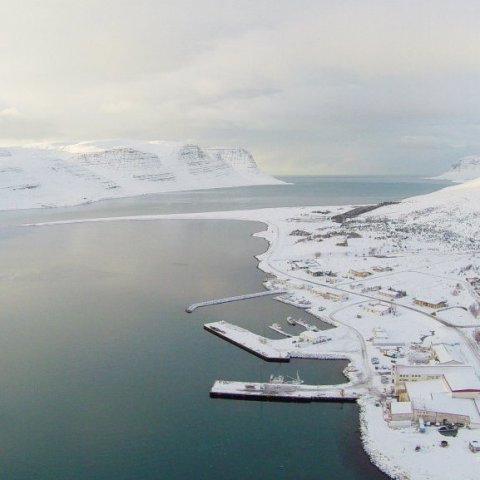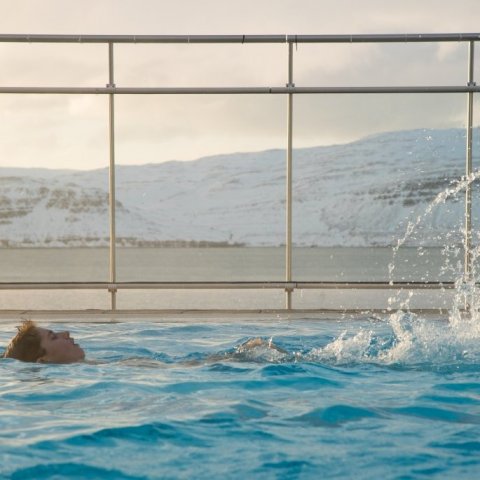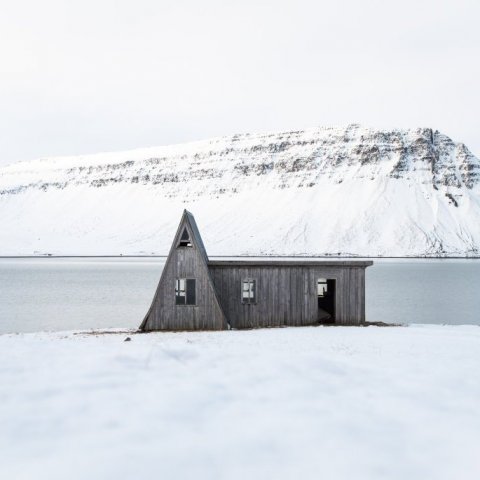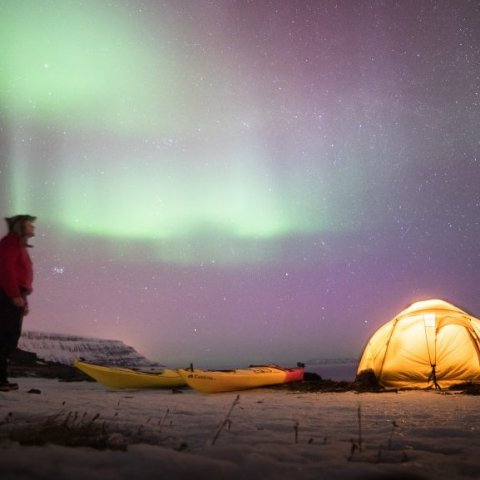A 7-Day Itinerary for Summer Exploration: Slow Travel, The Westfjords way
Before hitting the road, it's crucial to familiarize yourself with safe driving practices in Iceland. Most of the roads are paved but there are still some gravel roads along the route. Given the unpredictable weather, it's wise to visit www.road.is and https://safetravel.is/ for essential information on road conditions, driving tips, and other safety guidelines for navigating Iceland's roads.
Day 1: Dalir & Strandir
|
Start the day early and hit the road. Driving north on route 1 from Reykjavík it will take you approximately 1 hour 40 minutes to get to the start of the Westfjords way, simply turn left on to route no. 60 and once you have crossed Brattabrekka your first mountain pass, your journey around to the Westfjords has officially begun. First you’ll drive through an area called Dalir. Make a pitstop for a delicious homemade Ice cream at the Erpsstaðir dairy farm. There they also produce skyr, cheese among other delicious dairy products. On site you'll also find a small playground for kids and various animals. For a visit back in time you could go to Eiríksstaðir museum where you’ll find a historically accurate replica of a Viking-age farm. Inside the longhouse you’ll learn about the first settlers and the Icelandic Sagas. Another fun stop is Hólar Farm. At this charming farm you will encounter a variety of animals, such as horses, dogs, a cat, rabbits, ducks, sheep, chickens, turkeys, goats, a pig, and even a talking raven, renowned worldwide for its appearance in the Netflix series "KATLA." You can pet the animals. Continue your journey towards Strandir area. 12 km south of Hólmavík you’ll find the sheep museum, which is a museum and a cultural center, located in Strandir near Hólmavík. You will find an entertaining and informative exhibition about the life & history of the area and of course everything about the Icelandic sheep. It offers a wide range of entertainment suitable for all age groups. The museum café has a delicious menu with locally sourced ingredients. Continue your drive towards your accommodation. Overnight in Dalir / Hólmavík / Strandir Area |
Experiences: Eirik the Red's homestead in Dalir Tours: Overnight Options:
|
Day 2: Hólmavík, Drangsnes, Djúpavík
|
Today you have multiple options for sightseeing and activites. Here are some suggestions. You can explore the town of Hólmavík, Drangsnes, Djúpavík and Norðurfjörður. In Hólmavík you can visit the Museum of Sorcery & Witchcraft. At the Museum of Sorcery and Witchcraft, visitors can delve into the lives, customs, and perspectives of 17th-century Strandir inhabitants, offering a unique glimpse into their world. From Drangsnes village are scheduled boat trips to Grímsey Island, a true gem of nature and a home to thousands of sea birds. If you are looking for relaxation, you can find hotpots in the middle of the village. Take a scenic drive up to the historical village of Djúpavík. Besides the breathtaking nature, you are bound to be captivated by the tiny settlements that greet you on the way. You’ll drive through Bjarnarfjörður fjord on Route 643. Bjarnarfjörður is home to the Sorcerer’s Cottage, an offshoot of Hólmavík’s famous Museum of Witchcraft and Sorcery. The historical village of Djúpavík dates back to 1917, when a herring factory was established in this small creek by the fjord Reykjarfjörður. Above Djúpavík is a beautiful waterfall with a good hiking trail by the waterfall. In Djúpavík you'll find art and history exhibitions in the old herring factory. If you are up for a swim with views, Krossnes swimming pool is where it’s at. The pool is heated by natural hot-springs. It is considered an ‘Infinity Pool’ due to the fact it has magnificent views of the ocean, with nothing impeding the view between the two waters. A fantastic place to spot some of the country’s unique wildlife. Whales are occasionally seen breaking the surface and raising their flukes and the area is inhabited by many seabirds and seals. You also have a slight chance to see dolphins. Driving further north you could enjoy an evening sail to Drangaskörð with local company Strandferdir. One of the most impressive and least-talked-about natural features in all of Iceland, Drangaskörð are a series of seven rocky peaks jutting out into the sea and is an amazing sight in the evening sun.. Stay another night in Hólmavík/Drangnes/Strandir area |
Experiences: The Icelandic Sorcery and Witchcraft Museum Tours: Overnight Options: |
Day 3: Drive towards Ísafjörður
|
It’s time to get back on the road. From Hólmavík you’ll be driving through multiple beautiful fjords towards Ísafjörður. There you will find Heydalur Hotel that also offers many opportunities for recreation and activites. You could also join a guided hiking tour or kayaking with Ögur Travel Another fun stop on your way to Ísafjörður include Litlibær, a house made of timber with stone side walls and grass on the roof. You can make stop there and have a coffee and waffle. Nearby you’ll find Hvítanes, situated between Hestfjörður and Skötufjörður fjords in "central" Ísafjarðardjúp. As you arrive you should check the rocks at the shore. Hvítanes is one of Iceland most easily accessible seal colony, where large numbers of Harbour seals can be found relaxing on the rocks just meters from the shore. If you are up for a hike then stop at Valagil. It is a spectacular ravine, complete with mighty waterfall and made from layers upon layers of ancient lava. You will find Valagil at the landward end of Álftafjörður. There is a marked footpath to the ravine from the road. Continuing you’ll drive through the town of Súðavík. There you can make a visit to The Arctic Fox Centre, a non-profit research and exhibition center, focusing on the arctic fox (Vulpes lagopus) - the only native terrestrial mammal in Iceland. In and around Ísafjörður, the largest town in the peninsula, visitors have ample opportunities to immerse in culture, nature, and cuisine (We really recommend that you'll try fish at the local restaurants). Adventure seekers can opt for cycling tours, hiking, sea kayaking, rib safari tours, and ATV tours. Those interested in culture and history can explore Ósvör museum, Westfjords heritage museum, or take a walking tour. A new highlight is the viewing platform in Bolungarvík, Outstanding Bolafjall, offering panoramic views of Hornstrandir Nature reserve. Overnight in the Ísafjörður area. |
Experiences: Tours: Overnight Options:
|
Day 4. Ísafjörður and surrounding area
|
Today you have multiple options. If there’s anything you missed yesterday, you could do that today. For an unforgettable experience, venture to the Hornstrandir reserve for a day tour to witness nature's beauty up close. There are a few operators that you can choose to sail with. Its main attractions are three. First, the bird cliffs surrounding the bay of Hornvík, are a magnet of gigantic proportions. On the eastern side of the bay the cliff reaches a height of more than 500 metres, and the birds are teeming. Second, as there is no infrastructure and the tourists few in relation to the sheer size of the area, the sense of remoteness is strong. The nature is pure and the tranquillity unmatched. Third, the area is a haven for the Arctic fox (think hunting-ban and bird-packed cliffs), the chances of spotting one are high. You could also take a tour to Vigur Island, there are daily boat tour from Ísafjörður. Puffins, eiders, guillemoths and arctic terns are this island’s magnets, and they are all abundant. Indeed, as the puffins, which nest in burrows, have dug through much of the island’s soil, travellers have to follow a certain path to avoid falling into one. Eiders and humans share a mutual beneficence; eiders get protecion by nesting in close vicinity of the people, who collect the precious down from the eider nests. Overnight in the Ísafjörður area. |
Experiences: Tours: Overnight Options: Restaurant Options: |
Day 5: Fishing villages, Dynjandi & Monsters
|
Heading toward the southern part of the Westfjords, visit nearby fishing villages like Flateyri, Suðureyri, and Þingeyri, they offer authentic seaside charm shaped by fishing traditions. In Suðureyri you could for example join a walking tour with a taste of the local cuisine. ÞingeyriIn the fjord of Dýrafjörður, you’ll find the trail of Viking Saga hero, Gísli Súrsson, there you have options of joining a horse-riding tour from Þingeyri or even go for a light hike up to Sandafell. Following this, marvel at the awe-inspiring Dynjandi waterfall, a spectacular 100-meter-tall waterfall. Hiking up towards the waterfall you will pass 5 other waterfalls, the hike takes approximately 15 minutes. Drive to Bíldudalur. On the way there you have the option of taking a dip in the Reykjarfjörður geothermal pool. Afterwards make a stop at Foss waterfall where you will also stumble up on the so called A-house, wich has been a popular pitstop among travellers and photographers. This abandoned house is unique for its shape and location. According to folktales, Arnarfjörður is infested with sea monsters, to learn more about these creatures and sightings we recommend visiting the Icelandic Sea Monster Museum. Overnight in accommodation in/around Bíldudalur/Tálknafjörður/ Patreksfjörður |
Experiences: Overnight Options: Restaurant Options: |
Day 6: Látrabjarg Birdcliff & Red sand Beach
|
Head towards Látrabjarg, the westernmost point of Iceland and one of Europe’s largest bird cliffs. This natural wonder spans 14 kilometers and rises up to 441 meters in heigh. And it's as steep as it gets, dizzyingly so. Safe from foxes, the birds are fearless, and provide stunning photographic opportunities from close range. But look out, the edges are fragile and loose and the fall is high. Látrabjarg is the most visited attraction in the Westfjords. Afterwards drive towards Rauðasandur (e. Red sand). It’s an amazing 10 km beach with red sand. Today go and see the magnificent red sand beach “Rauðasandur”. The magnificent hues of the sand differ with daylight and weather, and the beach is the biggest pearl in a string of coves with sand ranging in colours from white through yellow through red to black. Just pure sand enlivened by countless seabirds and seals, an oasis with unique tranquility. In Patreksfjörður you can join a kayaking tour with an amazing view over the fjord and the village from a different angle or go for a hike in th surrounding area. A perfect ending for the day is in the Patreksförður swimming pool, a beautiful outdoor pool which offers a spectacular view over the fjord. Overnight in accommodation in/around Bíldudalur/Tálknafjörður/ Patreksfjörður |
Experiences: Overnight Options: Restaurant Options: |
Day 7: Back to Reykjavík
|
Today, you'll journey back to Reykjavik at your own pace, treating yourself to the breathtaking scenery of Breiðafjörður along the way. You could make a stop at either Laugarneslaug geothermal pool with stunnings views over Breiðafjörður or make a stop at Hellulaug a geothermal pool, located just off the hightway, close to the beach in Vatnsfjörður. It is quite lovely to chill out in the pool(38°/100,4 F) while looking out over the fjord. The pool cannot be seen from the road, but there is a parking lot next to the path that leads to Hellulaug. The pool is 60 cm deep. Stop at Þingmannaá Waterfall. A charming waterfall where explorers can walk behind one of the waterfalls and view it from behind the cascading water. A parking lot is located about 100 meters from the road and to reach the waterfall, a 5 minute walk from the parking lot. In Reykhólar town you can visit the The Boat and Gift-of-Nature Museum & travel information centre, it tells the story of how inhabitants traditionally harvested the rich, natural resources in Breiðafjörður. A variety of local products, baked breads, coffee, tea, books and souvenirs are available at our gift shop. It's Open everyday from June 1 to August 30, 11:00-18:00. Near Reykhólar you’ll find a lovely viewing point from the mountain Klofningur with a panoramic view over Breidafjordur Bay, Snaefellsnes Peninsula and Bardaströnd. You can even hike up the mountain from the farm Stakkaberg. Your journey of the Westfjords have now come to an end. Head to the Reykjavík area or stay another night in the Dalir region. |
Experiences: Overnight Options: Restaurant Options: |


